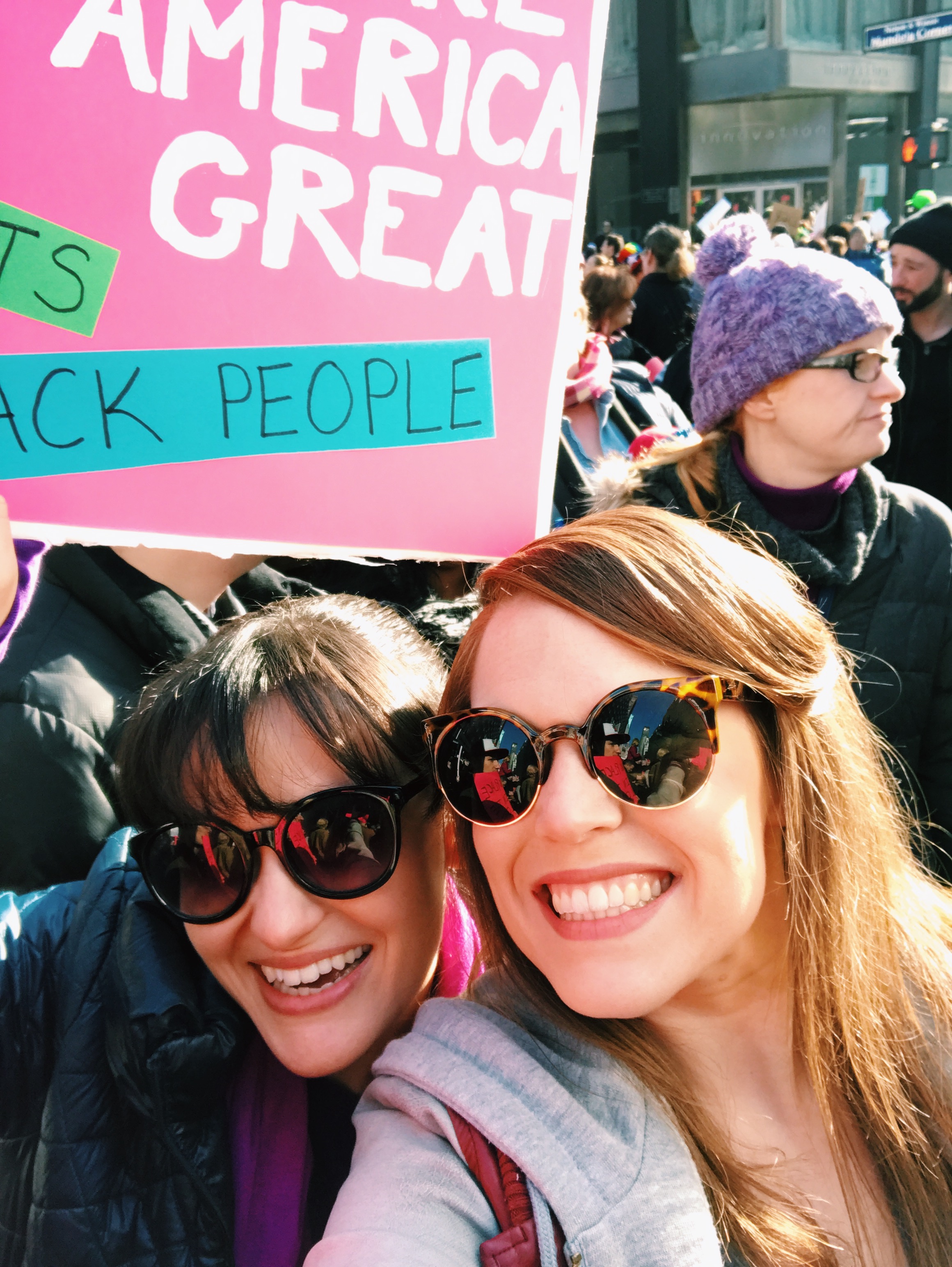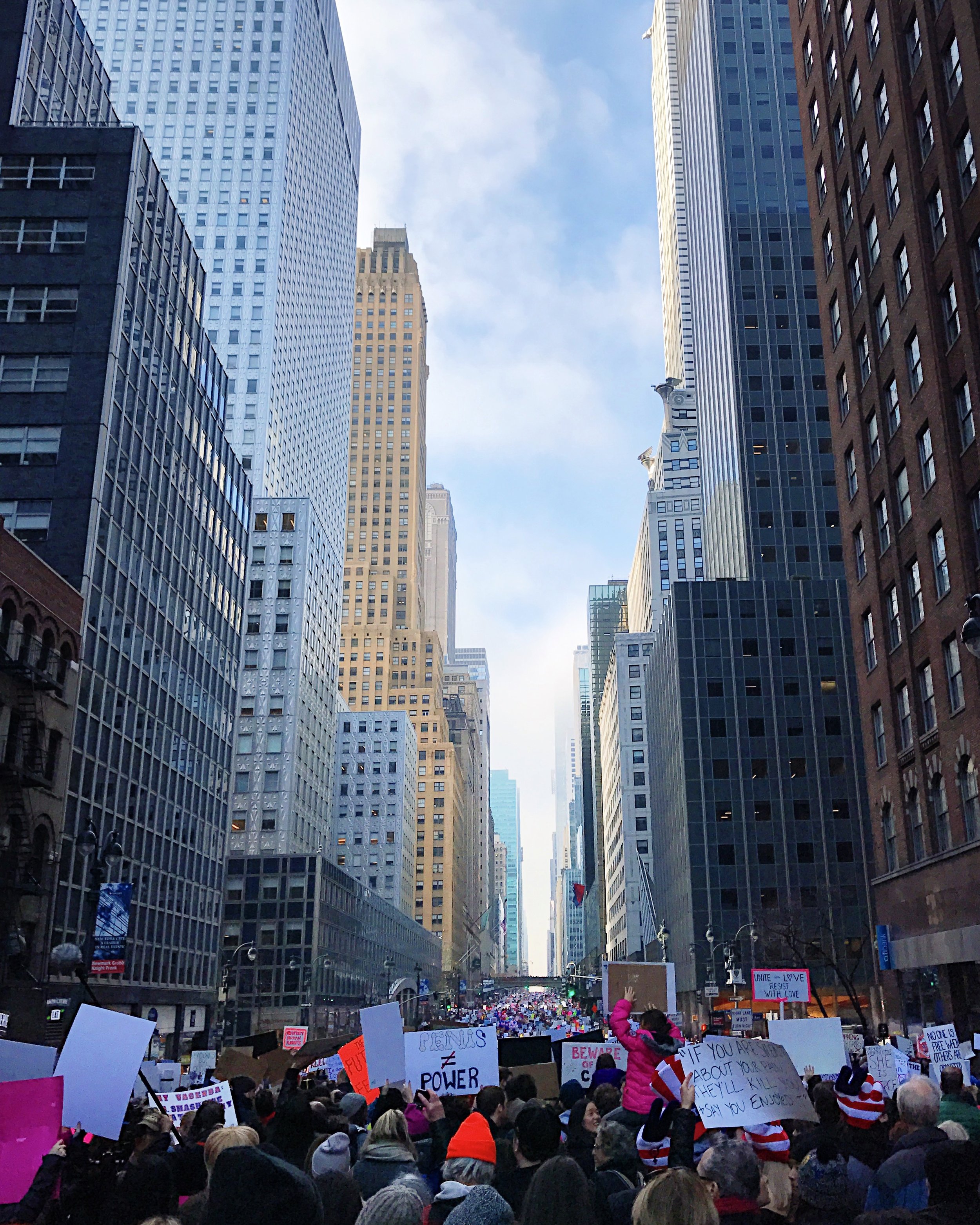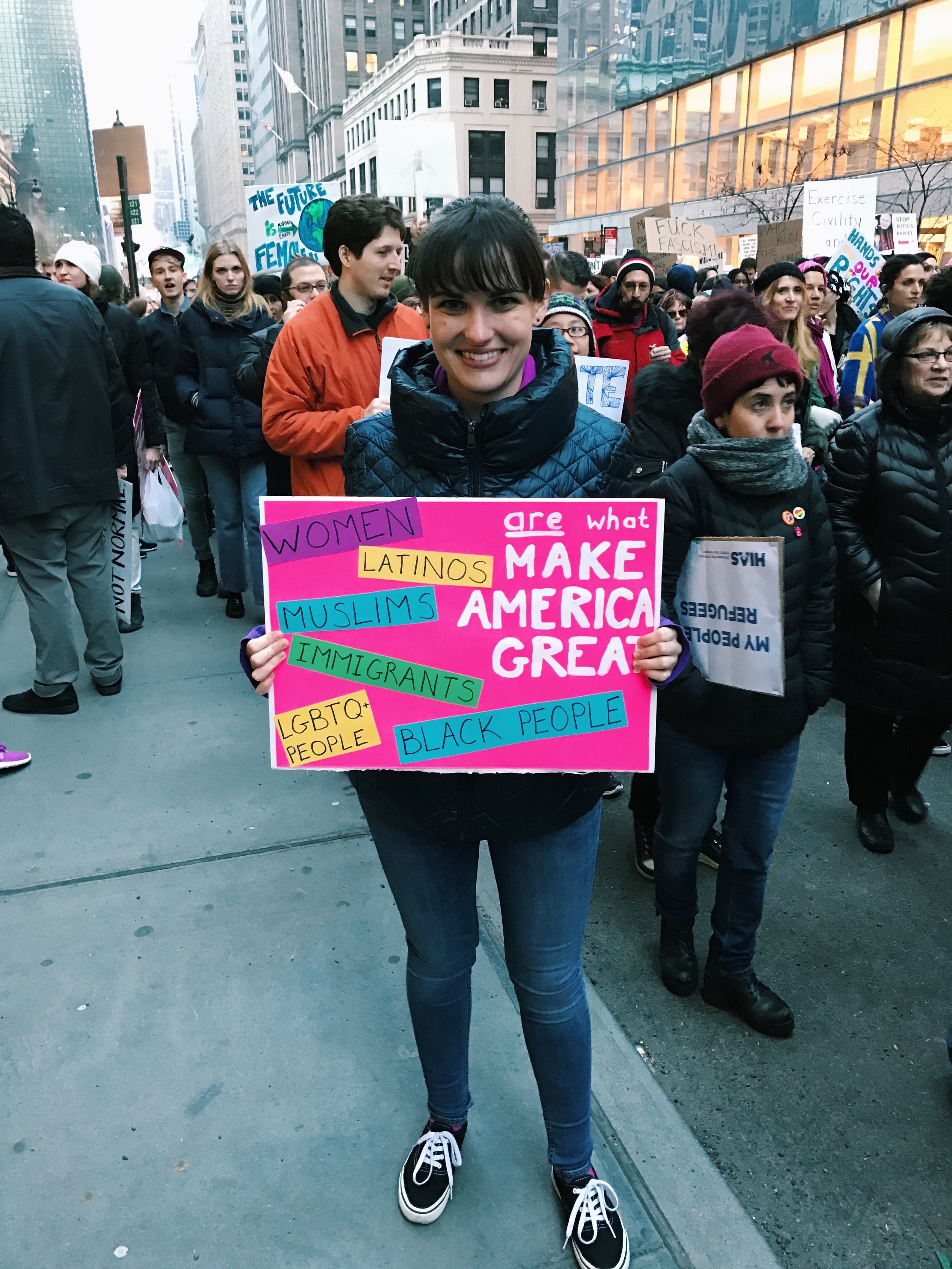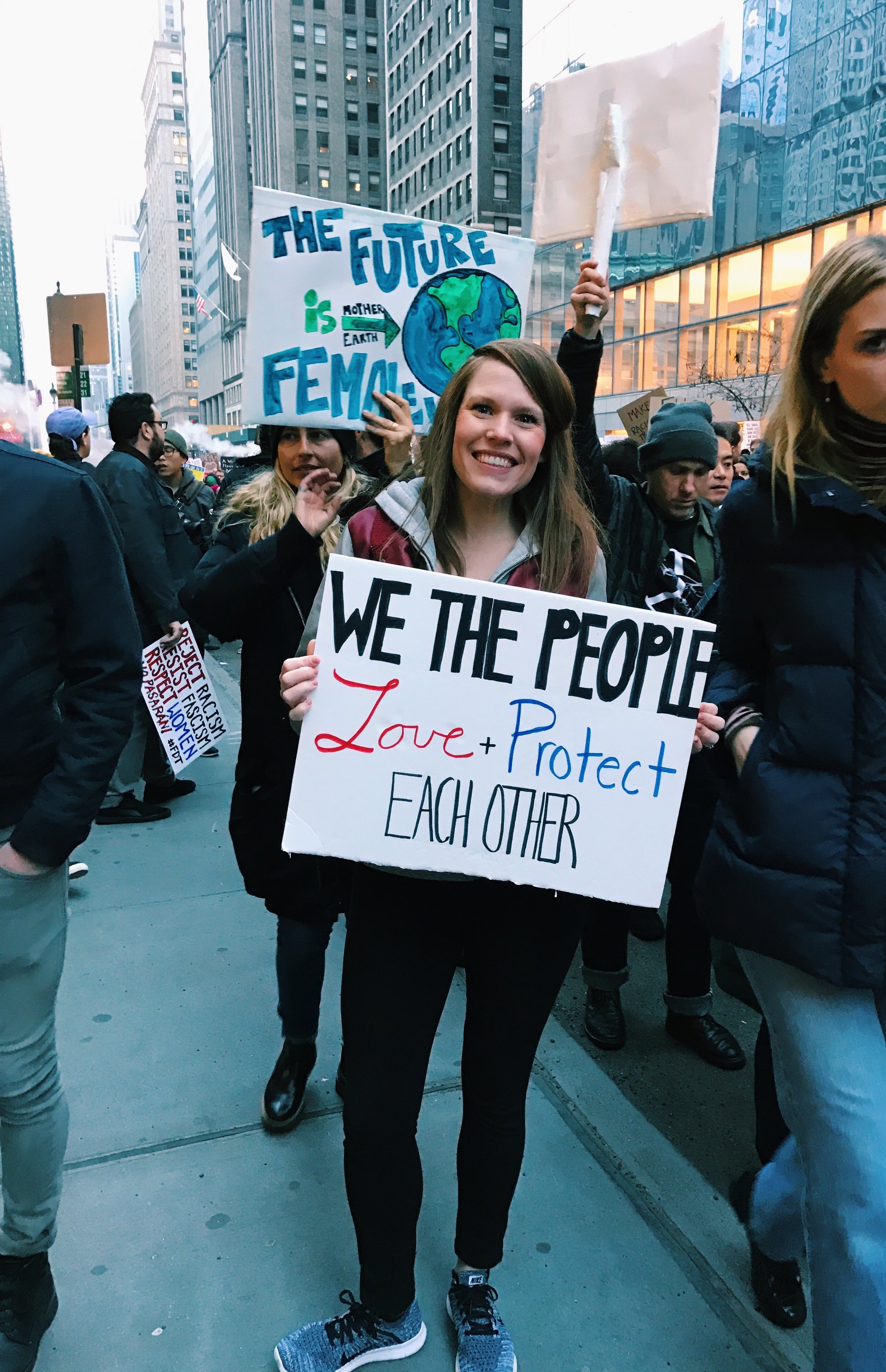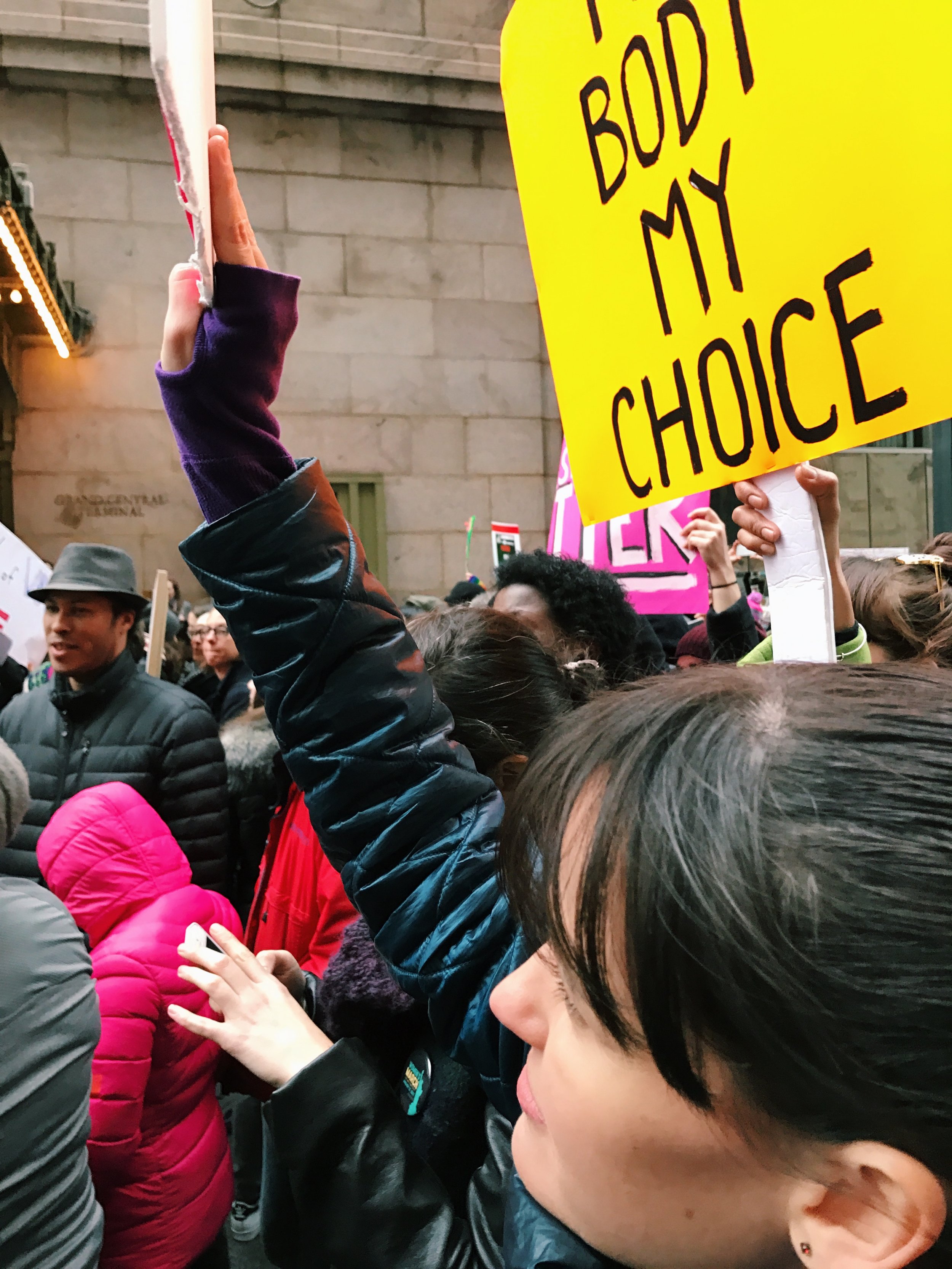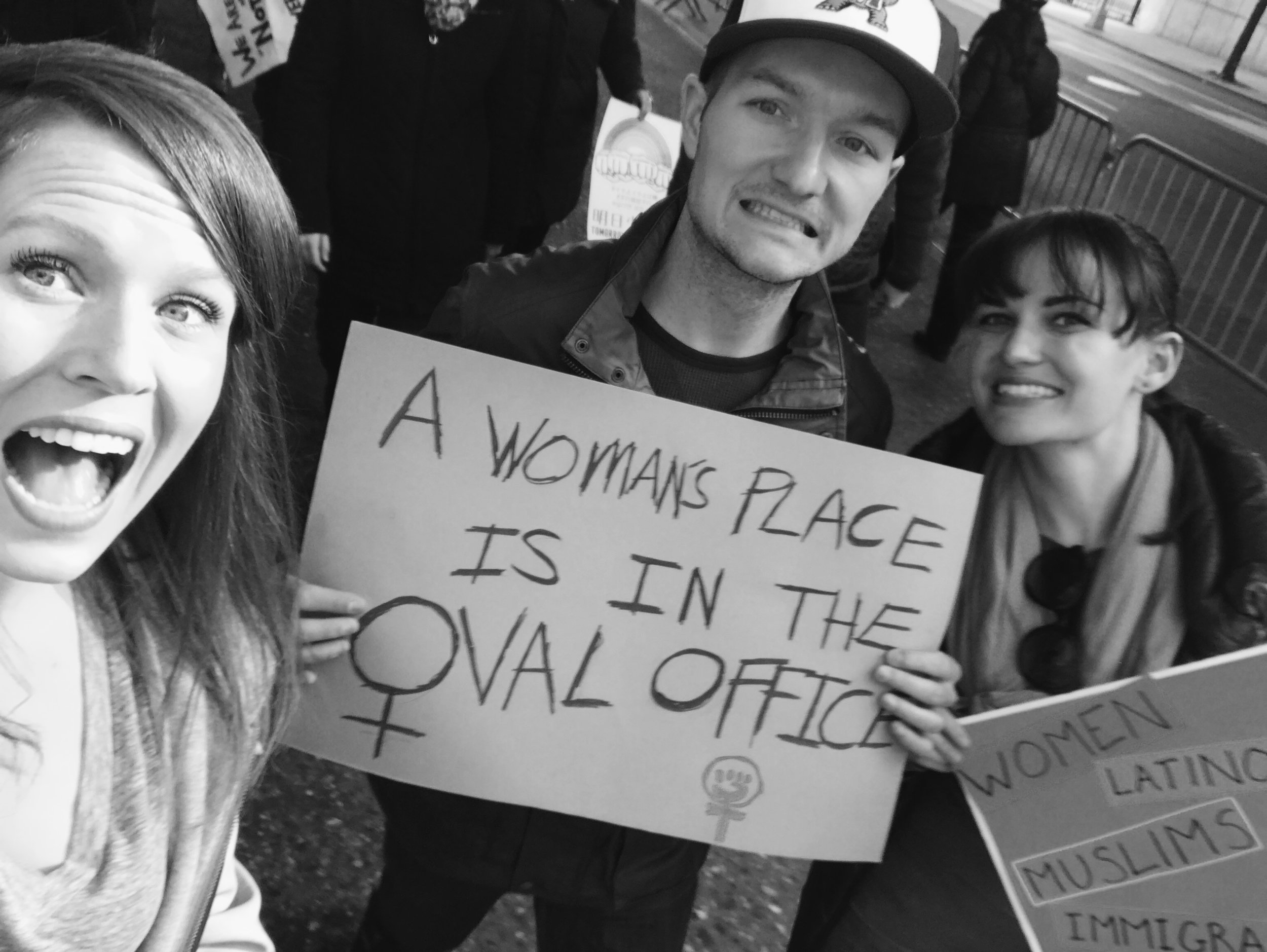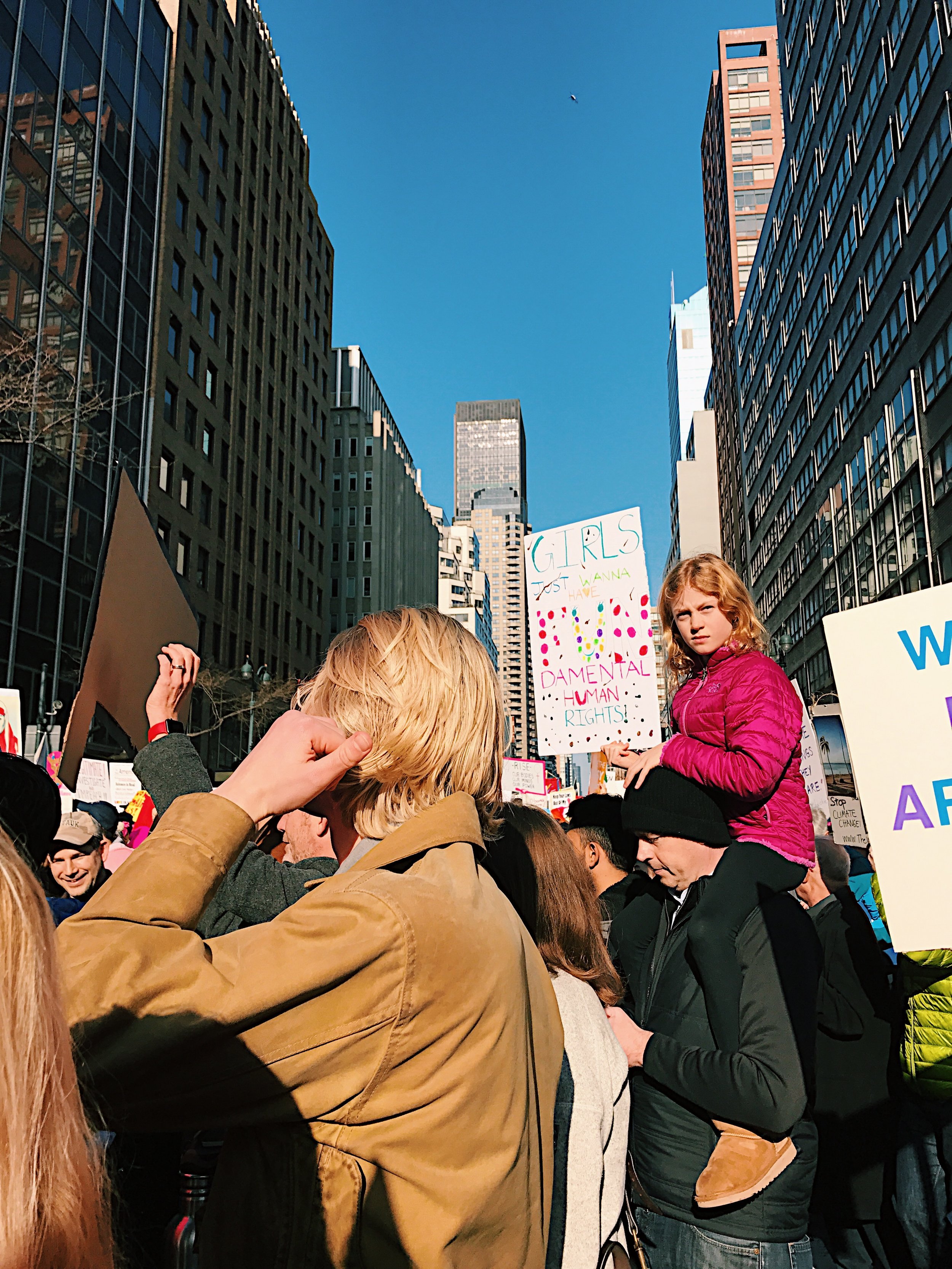We were packed together, our toes to their heels.
Thousands of people surrounded me. Pick any ethnicity, gender, and age combination; I promise you they were there. The buildings of 42nd Street bowed before us as a wave of protesters walked on into the distance, first turning blurry, and then into tiny dots. Society marched across Manhattan for as far as my eye could see.
I stood with Clare and Bryan. I’d met Clare in grad school, and she’d married Bryan several years later. As old city friends, we’d done an incredible amount of growing up together. We’d also all grown uncomfortable as the election raged on, and felt the need to do something besides lament about the current state of affairs over a cocktail.
It seemed as though much of the country felt the same way. The Women’s March had gained quick momentum in the weeks before the event. “Are you going?” “Which one are you attending?” My social media channels were full of both those planning their protest, and those admonishing against it.
In the end, we wanted to be in our city and we wanted our sentiments to be known. After discussing our reasons for marching, understanding the logistics, and making signs for the event, we met up at 1:00pm on Saturday January 21, 2017 and headed toward the protest's holding area.
For two hours, we only moved a couple of city blocks. We walked more like penguins, packed together, our toes to their heels. But now we marched further west on 42nd Street toward Grand Central Station. Though tightly packed into barricaded lanes, the crowd was now able to walk at a consistently slow pace.
I looked at my city. It’s been mine for nearly seven years. The buildings we passed were like acquaintances I hadn’t seen in some time. There, in the blue and silver skyscraper on Lexington—that was the old office for Parents magazine, my second internship in the city. The park to the east was where I used to eat a PB&J on sunny days. If I squinted, I could see myself sitting on a worn bench wearing a red dress and a gray pea coat.
What little girls we were.
What big girls we’d become.
I grabbed Clare’s hand and squeezed it to make sure we were in the present and not the past.
Then I looked at the people. All around me, they held signs and chanted. Angry people. Sad people. The terrified. The political. And, of course, the exhilarated. Our sidewalks were lined with those hoping to support any cause you could imagine, including the march itself. The one aligning factor to everyone’s presence was general dissatisfaction.
There is an ornate overpass in front of Grand Central called the Park Avenue Viaduct. It was closed to traffic and packed with supporters strapped with cameras, signs, or megaphones. They began to shout down to the marchers on the street beneath them.
“What does democracy look like?”
One, then two, then five joined in.
“What does democracy look like?”
The marchers around me began to shout back. At first I couldn’t hear what they were saying; it sounded like a large grumble 30 times over. From the overpass, our resilient small crowd asked us again: “What does democracy look like?”
And then the boom of the people echoed off of the buildings in a glass shattering roar.
It was as though our response had been choreographed.
One, then two, then 400 joined in.
We marchers responded in perfect unison: “This is what democracy looks like.”
“What does democracy look like?”
“This is what democracy looks like.”
As the back-and-forth chant thundered on, Clare and I stood with chills in the middle of street, in the middle of Manhattan, in the middle of a 400,000-person crowd. We smiled, and closed our eyes.
In a rare moment, we felt history move around us. It slithered through the crowd, and reverberated off the towering buildings. It boomed down the avenues of New York City. It slipped through my hair. Its presence demanded to be known.
I’ve never felt something quite like that before. No government class or historical documentary could illustrate more clearly what America is, and what it has always been. How lucky we are to be able to flood our streets and freely speak against or in favor of the government. How lucky some are to remain apathetic, with no true consequence. We’ve studied the Civil Rights movement, we’ve memorized the big court cases, and we’ve celebrated the Revolutionary War. Clare’s family immigrated to California from Northern Ireland to flee the Troubles. My line of family, too, has labored through its share of poverty and success. We’ve tasted others’ narratives—but this march was our own piece of a larger story.
History, for once, felt tangible—like a gentle breeze that whispers something hopeful in your ear. You breathe it in; it’s yours. And yet, history in the making is felt by thousands that notice that same unexplainable movement of time.
Editor’s Note: It is important to know I was singing Les Miserables’ “Do You Hear the People Sing” and Hamilton’s “Yorktown” both to Clare and to myself throughout the entire day. Also, I was not the only one doing so, because this is New York City after all.
